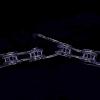[opory toczenia] Porównanie
-
Podobna zawartość
-
- 84 odpowiedzi
- 7 255 wyświetleń
-
- 10 odpowiedzi
- 7 266 wyświetleń
-
[nowy rower Btwin] .Ciężko się jeździ-problem z prędkością 1 2
Przez kuffs,
- opory toczenia
- prędkość
- (i 1 więcej)
- 36 odpowiedzi
- 13 068 wyświetleń
-
- 43 odpowiedzi
- 9 825 wyświetleń
-
- 1 odpowiedź
- 3 180 wyświetleń
-



Rekomendowane odpowiedzi
Zarchiwizowany
Ten temat przebywa obecnie w archiwum. Dodawanie nowych odpowiedzi zostało zablokowane.